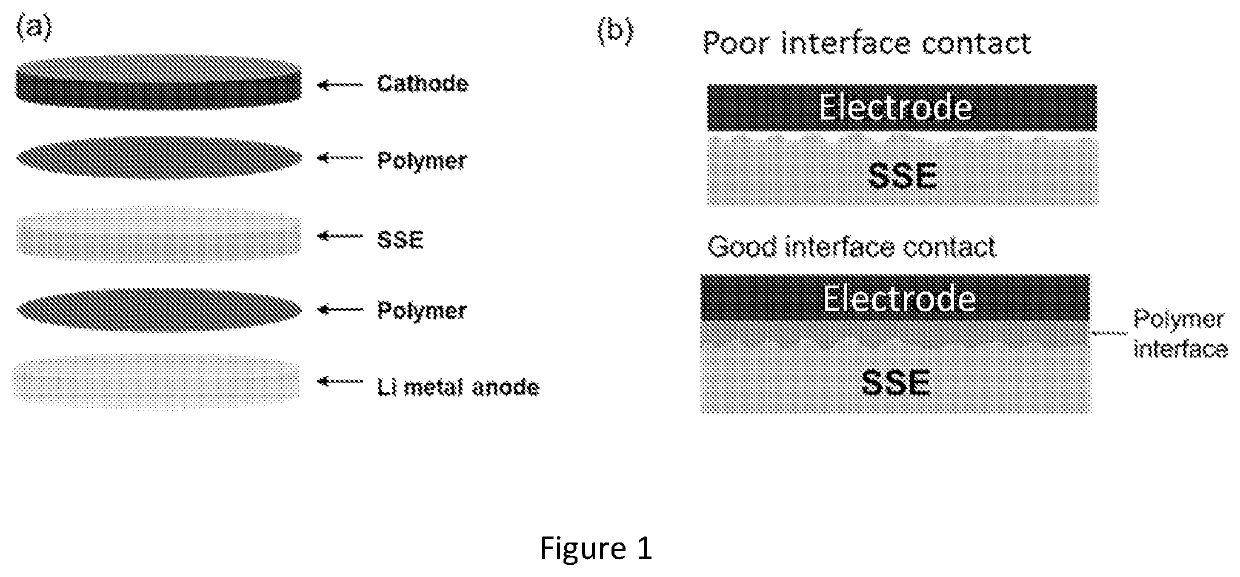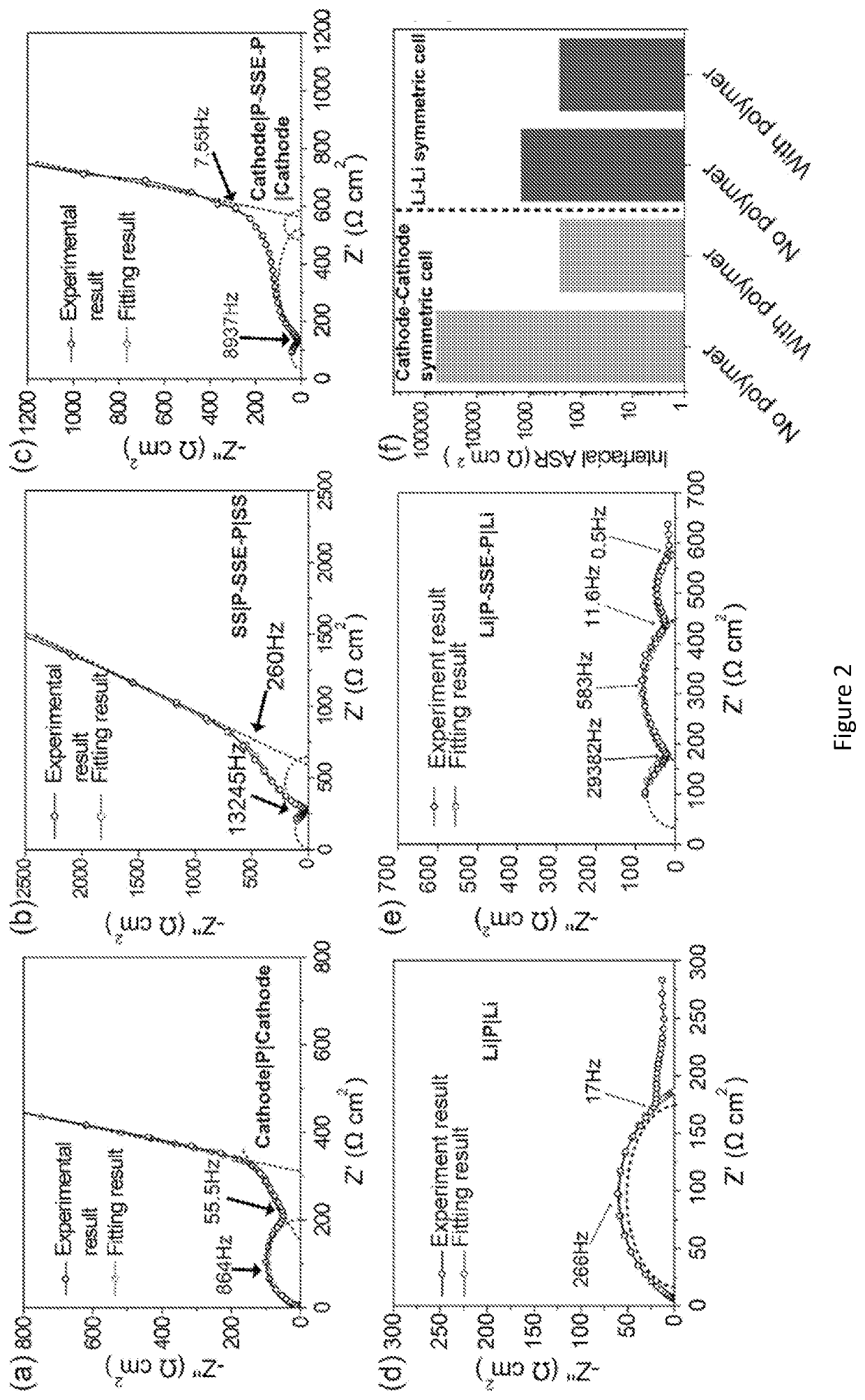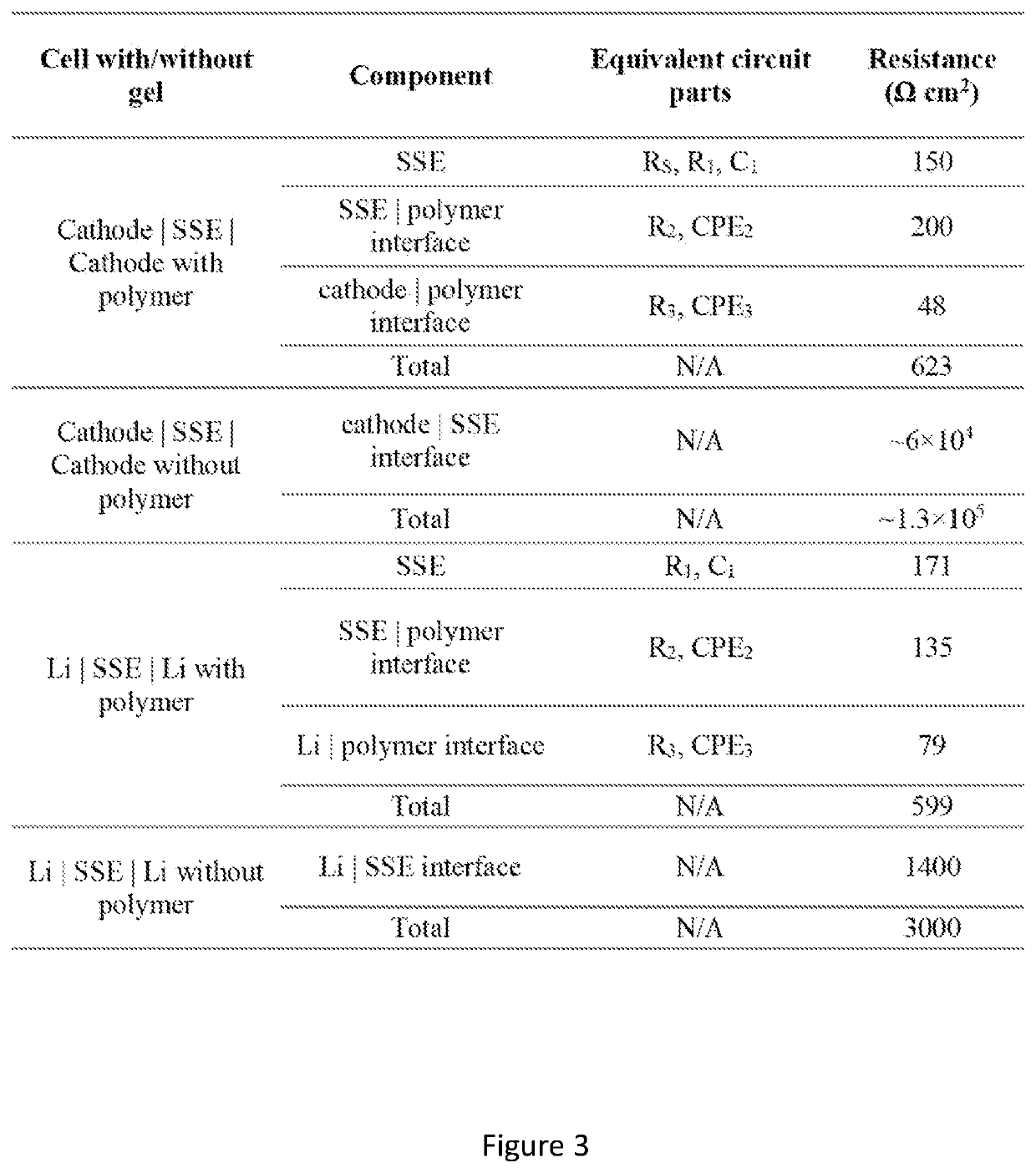Solid-state hybrid electrolytes, methods of making same, and uses thereof
a hybrid electrolyte and solid-state technology, applied in the direction of oxide conductors, non-metal conductors, cell components, etc., can solve the problems of high interfacial resistance, large overpotential, and safety concerns in long-term cycling applications
- Summary
- Abstract
- Description
- Claims
- Application Information
AI Technical Summary
Benefits of technology
Problems solved by technology
Method used
Image
Examples
example 1
[0181]This example provides a description of solid-state hybrid electrolytes of the present disclosure. This example also provides examples of making and characterization of such electrolytes.
[0182]Reduced Interfacial Resistance of Hybrid Polymer / Garnet-type Electrolyte System for Lithium-Metal Batteries. Garnet-type solid state electrolyte has demonstrated promising results for Li metal batteries, due to its high ionic conductivity (10−4 S / cm˜10−3 S / cm) and wide electrochemically stable window (0˜6 V vs. Li+ / Li). One of the main challenges for garnet-type solid state electrolyte is the high interfacial resistance between the electrolyte and electrodes. This examples described a hybrid electrolyte with a solid state Li7La2.75Ca0.25Zr1.75Nb0.25O12 (LLCZN) garnet-type electrolyte between two gel polymer electrolyte layers to decrease the interfacial resistance of a lithium metal symmetric cell and protect against dendrite penetration. The gel polymer electrolyte layers form favorable ...
example 2
[0196]This example provides a description of solid-state hybrid electrolytes of the present disclosure. This example also provides examples of making and characterization of such electrolytes.
[0197]Solid-state Ion Conducting Framework to Prevent Chemical and Physical Short Circuits in Li-Metal Batteries. Chemical and physical short circuits are two important challenges in Li-metal batteries associated with transport of soluble materials and penetration of Li dendrite, leading to limited battery cycle-life and thermal runaway. To address these challenges, a hybrid solid-state electrolyte system consisting of a structural garnet-type solid-state electrolyte (SSE) and liquid electrolyte are described in this example. The hybrid electrolyte utilizes regular liquid electrolyte to maintain high ion transport kinetics in electrodes and employs SSE to not only separate electrodes as well as liquid electrolyte apart but also block the unwanted species diffusion and Li dendrites. The example ...
example 3
[0214]This example provides a description of solid-state hybrid electrolytes of the present disclosure. This example also provides examples of making and characterization of such electrolytes.
[0215]Three-Dimensional Bilayer Garnet Solid Electrolyte Based High Energy Density Lithium Metal-Sulfur Batteries. This example describes a new design for a three-dimensional (3D) solid electrolyte framework and a safe, high energy density hybrid solid state battery using a lithium metal anode that is capable of utilizing a wide variety of cathode chemistry. This solid state electrolyte framework can potentially open a new research direction for next-generation high energy density Li metal batteries.
[0216]To simultaneously address the challenges of chemical / physical short circuits and electrode volume variation, we demonstrated a three-dimensional (3D) bilayer garnet solid-state electrolyte framework toward advanced Li metal batteries. The dense layer is reduced in thickness to a few microns an...
PUM
| Property | Measurement | Unit |
|---|---|---|
| ionic conductivity | aaaaa | aaaaa |
| current density | aaaaa | aaaaa |
| current density | aaaaa | aaaaa |
Abstract
Description
Claims
Application Information
 Login to View More
Login to View More - R&D
- Intellectual Property
- Life Sciences
- Materials
- Tech Scout
- Unparalleled Data Quality
- Higher Quality Content
- 60% Fewer Hallucinations
Browse by: Latest US Patents, China's latest patents, Technical Efficacy Thesaurus, Application Domain, Technology Topic, Popular Technical Reports.
© 2025 PatSnap. All rights reserved.Legal|Privacy policy|Modern Slavery Act Transparency Statement|Sitemap|About US| Contact US: help@patsnap.com



